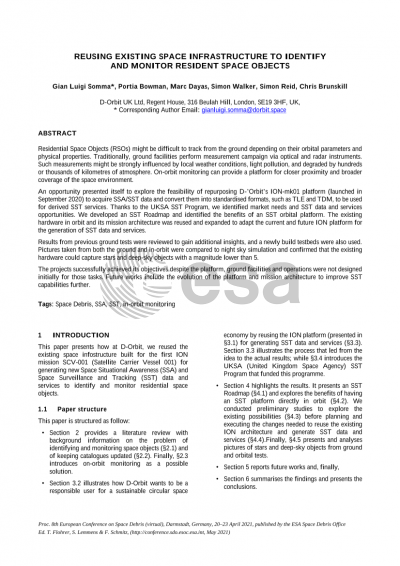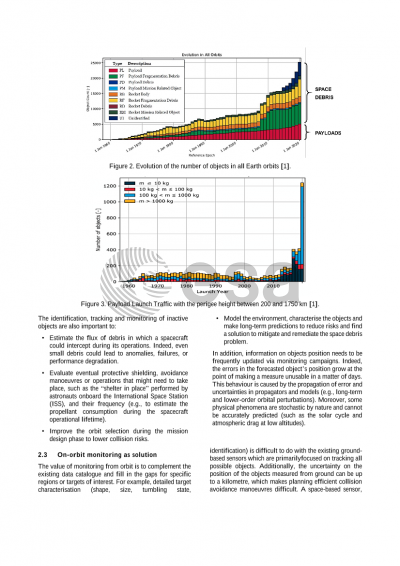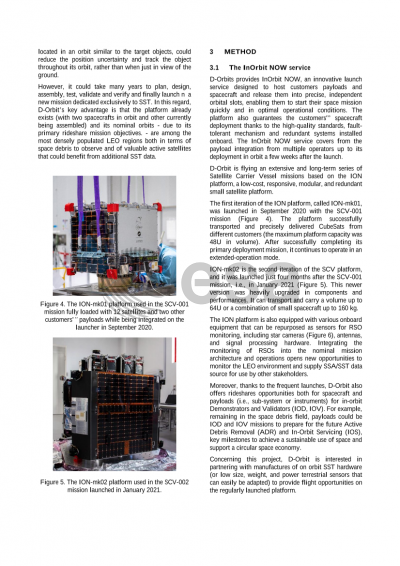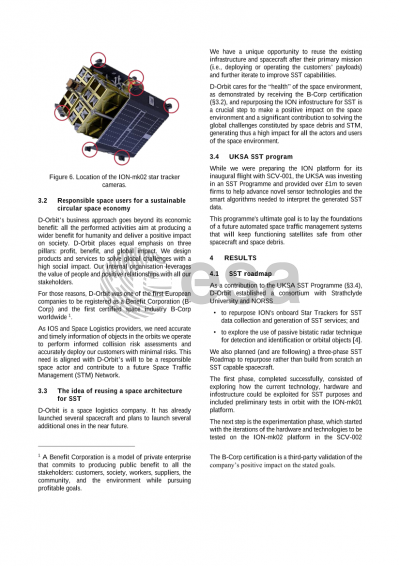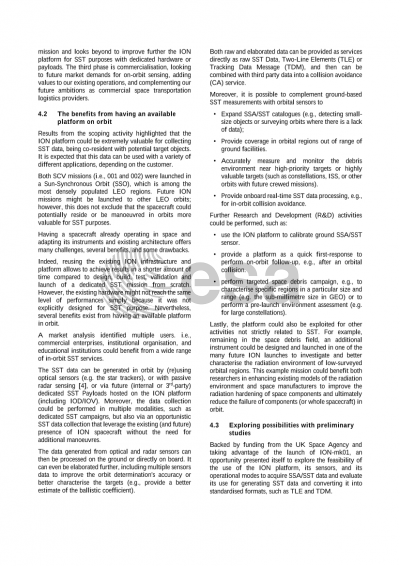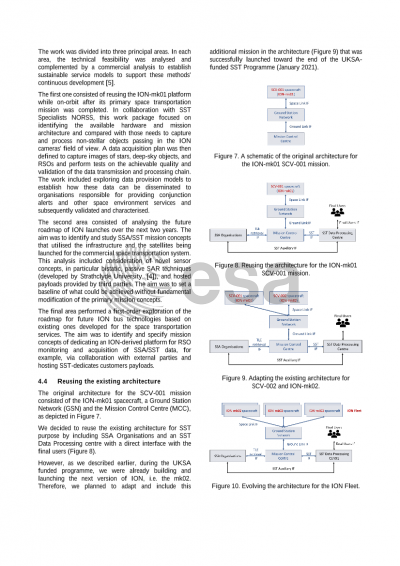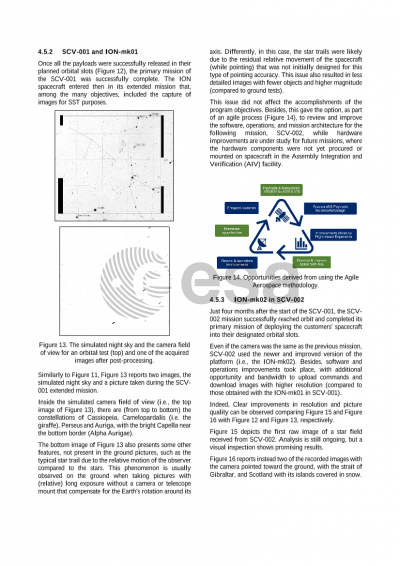Document details

Abstract
RSOs are hard to track from the ground as monitoring sites are typically fixed-position and have to take measurements through hundreds or thousands of kilometres of atmosphere. On-orbit monitoring can provide a platform for closer proximity and broader coverage of the space environment. D-Orbit is flying an extensive and long-term series of Satellite Carrier Vessel missions, based on the ION platform, itself a low-cost, responsive and modular small satellite platform. ION is also equipped with various on-board equipment that can be repurposed as sensors for RSO monitoring, including star cameras and RF antennas and signal processing hardware (e.g. software defined radios). Integrating the monitoring of RSOs into the nominal conops of a mission opens new opportunities to monitor the LEO environment and supply an SSA/SST/SDA data source for use by other stakeholders. Backed by funding from the UK Space Agency and taking advantage of the launch of ION mk01 by D-Orbit in September 2020, an opportunity presented itself to explore the feasibility of the use of the platform, its sensors and its operational models for the purposes of acquiring SSA/SST/SDA data and evaluating its use for conversion into standardised formats, such as TDM.
The approach to the work was divided into three areas. Firstly, the use of ION mk01 while on-orbit after its primary space transportation mission was completed. This focused on the implementation of a conops to integrate the targeted imaging of RSOs anticipated to pass in proximity to ION close enough to detect a non-star point or streak. This included exploration of data provision models to establish how these data can be disseminated to organisations responsible for providing conjunction alerts and other space environment services and subsequently validated and characterised. Secondly an the analysis of the future roadmap of ION launches over the next two years was performed. The aim was to identify and study SSA/SST/SDA mission concepts that utilised the infrastructure being launched for the purposes of the commercial space transportation system. This analysis included consideration of novel sensor concepts, in particular bistatic, passive SAR techniques, and hosted payloads and aimed to set a baseline of what could be achieved without fundamental modification of the primary mission concepts. The final area performed a first order exploration of the roadmap for future ION bus technologies, based on those developed for the space transportation services, to identify and specify mission concepts that are enabled by dedicating an ION-derived platform for the purposes of RSO monitoring and acquisition of SSA/SST/SDA data. In each area the technical feasibility was studied in detail and complemented by a commercial analysis to establish sustainable service models to support continued development of these methods.
Preview
